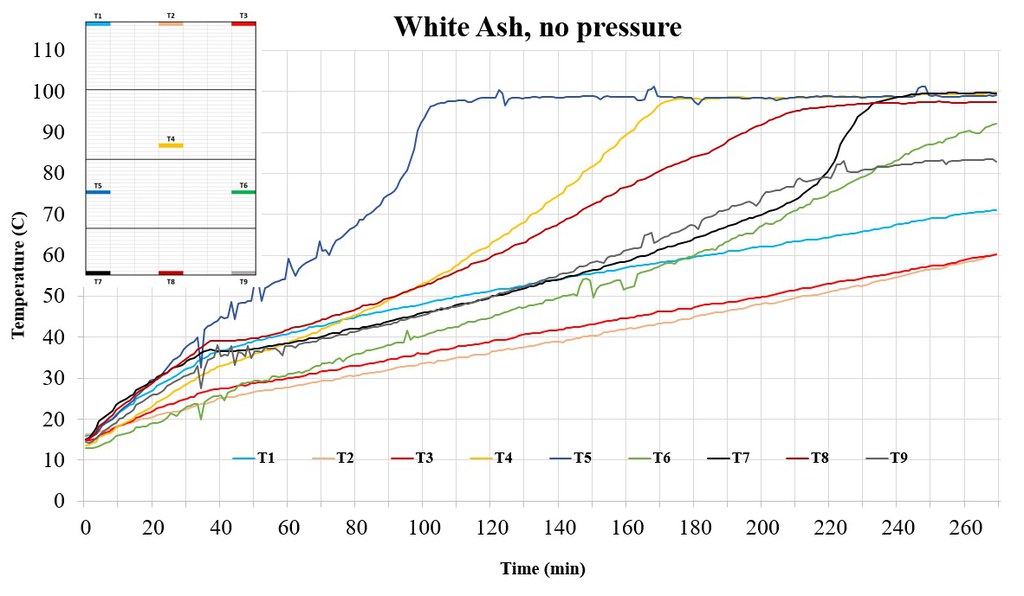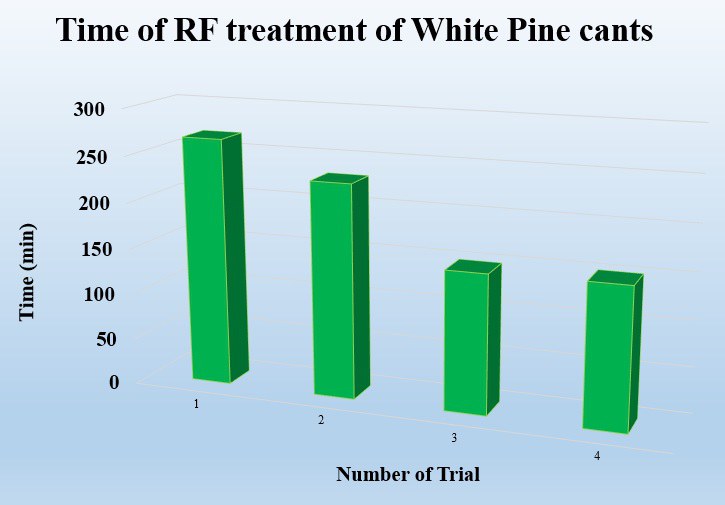The focus of our research is to develop, deliver, and promote optimized treatment schedules for RF technology that minimize energy consumption for the major wood species used to construct WPM by maximizing heating uniformity and minimizing treatment duration.
We designed a commercial-scale prototype of a novel, integrated RF system that was installed at PSU in Oct. 2017.
As an example of our commercial scale trials, we tested decking boards using 924-piece volume workloads. The idea to treat pallet components rather than raw cants came from interactions with our industry collaborator at Penn Pallet. Treating pallet components eliminates treatment of wood that will be discarded following pallet construction, saving the company money on energy consumption.

Fig. 1. Temperatures recorded by Neoptix fiber-optic sensors during RF treatment of white ash decking boards. Probes located in the workload had the ISPM-15 reached 60 °C for 1 min. after 269 min of treatment.
Thermal-images taken 12-15 min post treatment of one of our trials (time delay to depressurize and open the RF treating vessel) show very different heating outcomes for cant and stringer wood material (Fig. 3). Using equivalent power and equivalent load volumes, greater and more uniform volumetric heating was observed with the pallet component (stringer) load (Fig. 3, right image) in compliance with ISPM-15 compared to treatment of the raw cants (Fig. 3, left image).

Fig. 3. Left thermal image (older FLIR Model T250 camera) shows the heating consistency of 4"x6" cants and the same post-treatment results for the stringers (right image). The right image used a newly acquired FLIR model T530 camera. Note: Despite differences in appearance, both images are the same emissivity (ε= 1.00) value as camera calibrations for thermal reading sensitivity.
Fig. 4 shows consecutive progress in reducing treatment time for white pine cants as we optimize treatment methods. The first trial required 268 min, while for the 3rd and 4th trials had treatment times of 150 and 152 min, respectively. Faster treatment time will increase output capacity with a faster return on capital investment for the application of this technology.

Fig. 4. The figure represents the treatment duration for consecutive experiments performed on white pine cants.

